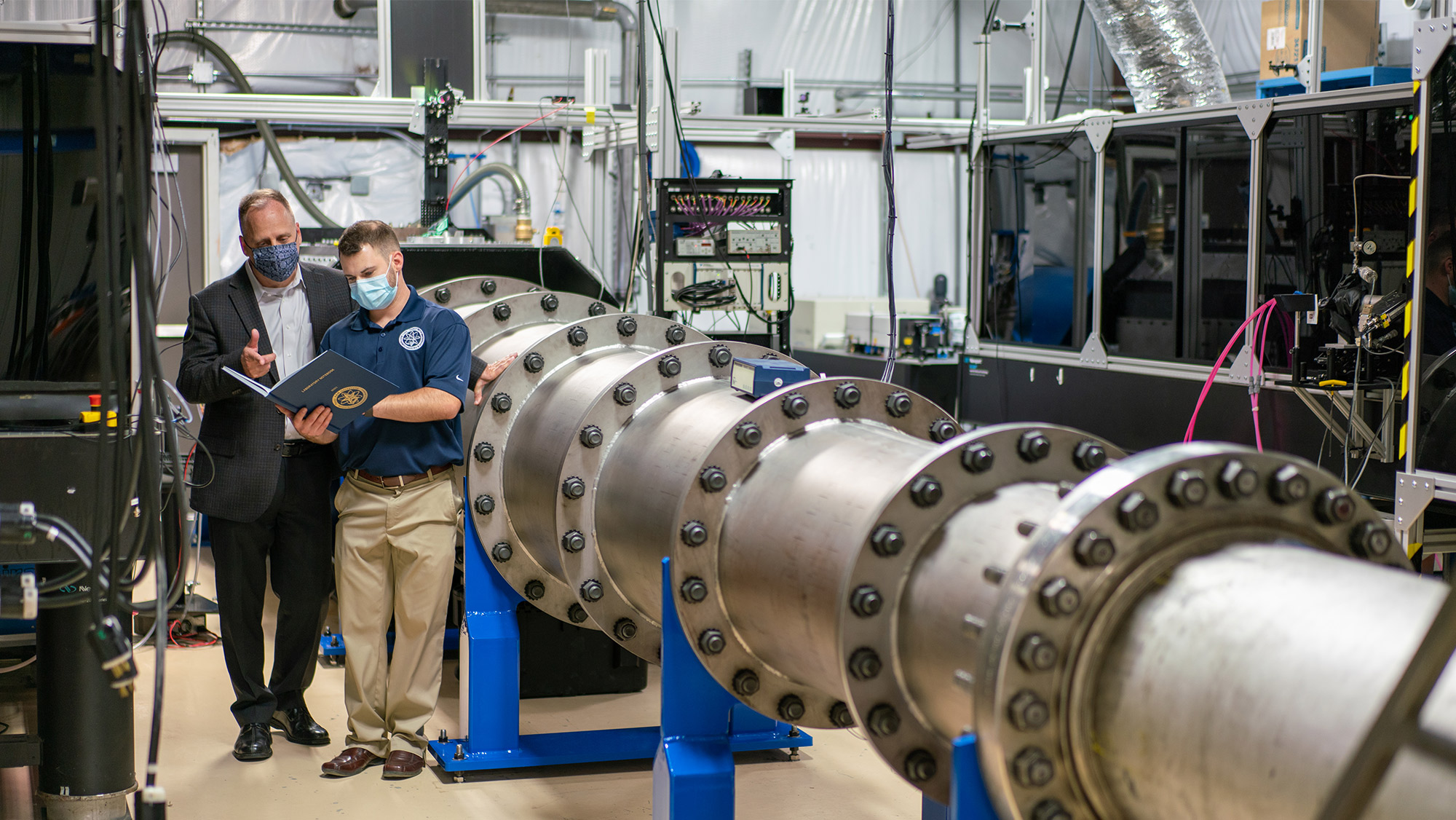
Overview
As one of the top-rated graduate aerospace engineering departments in the U.S., we offer our graduate students and post-doctoral scientists an advanced curriculum, exposure to current events through an active seminar series, and state-of-the-art research supported by the externally-funded research programs of our faculty.
Our graduate program offers these degrees: Master of Engineering (M.Eng.), Master of Science (M.S.) and Doctor of Philosophy (Ph.D.) degrees. Coursework and research topics include manned and unmanned aircraft, satellites and constellations, aerospace sciences, propulsion and energy, robotics and sensing, rotorcraft, hypersonic vehicles, autonomous morphing vehicles, advanced materials and structures, plus many more. University and research funding supports assistantships and internships, and furnishes our laboratories with modern facilities, instrumentation and computing resources.
For inquiries contact:
Graduate Advising
Graduate Catalog
The department offers graduate work and research programs in aeronautical/aerospace engineering. Programs leading to MEng, MS, and PhD degrees are available. The department also offers courses and faculty supervision for students pursuing the Doctor of Engineering degree. Major areas of interest are aero/fluid dynamics, hypersonics, computational fluid dynamics, fluid-structure interaction (aeroelasticity), flight mechanics, astrodynamics, spacecraft/aircraft dynamics and control, rotorcraft, computational mechanics, solid mechanics, micromechanics, nanomechanics, composite materials, bio-nano materials, aging aircraft and structures.
Research Areas in Aerospace Engineering
Graduate students in Texas A&M’s Department of Aerospace Engineering can engage in pioneering research that shapes the future of air and space technologies. The department’s faculty leads nationally and internationally recognized research efforts across a diverse range of domains. Students are encouraged to collaborate on interdisciplinary projects, publish findings and contribute to solutions with real-world impact.
-
Key research areas include:
· Autonomous and intelligent systems: Focused on the development of autonomous aerial and space systems, this area explores flight control, machine learning applications, robotics and decision-making algorithms for uncrewed vehicles and spacecraft.
· Hypersonics: Researchers explore high-speed flight at Mach 5 and beyond, studying aerothermodynamics, high-temperature materials and propulsion systems for military, space and re-entry applications.
· Multi-functional and extreme environment materials: Investigates materials that can withstand extreme pressures, temperatures and radiation—critical for applications in hypersonics, spaceflight and propulsion systems.
· Optical, remote and quantum sensing: Develops next-generation sensing technologies for use in navigation, surveillance, space situational awareness and environmental monitoring.
· Reacting flows and propulsion: Examines the fluid dynamics and combustion processes that power modern and future propulsion systems, including jets, rockets and alternative propulsion technologies.
· Space domain awareness: This area is dedicated to monitoring and managing objects in Earth’s orbit. Research supports improved tracking, collision avoidance and sustainable use of space environment.
· Space flight and operations (human and robotic): Encompasses both crewed and uncrewed mission design, life-support systems and the integration of humans and machines in space exploration efforts.
These research domains are supported by advanced laboratories, strong industry partnerships and access to national research funding. Students pursuing a graduate degree are encouraged to align their studies with one or more of these focus areas and participate in projects that advance aerospace innovation.